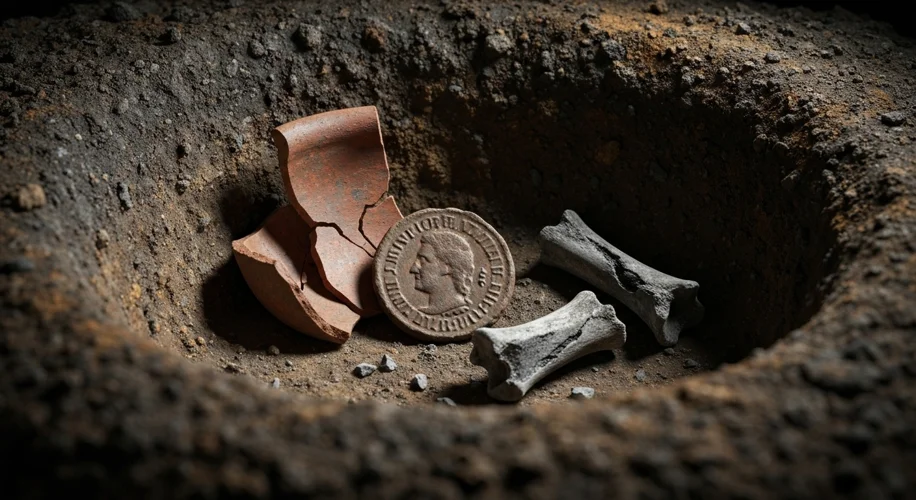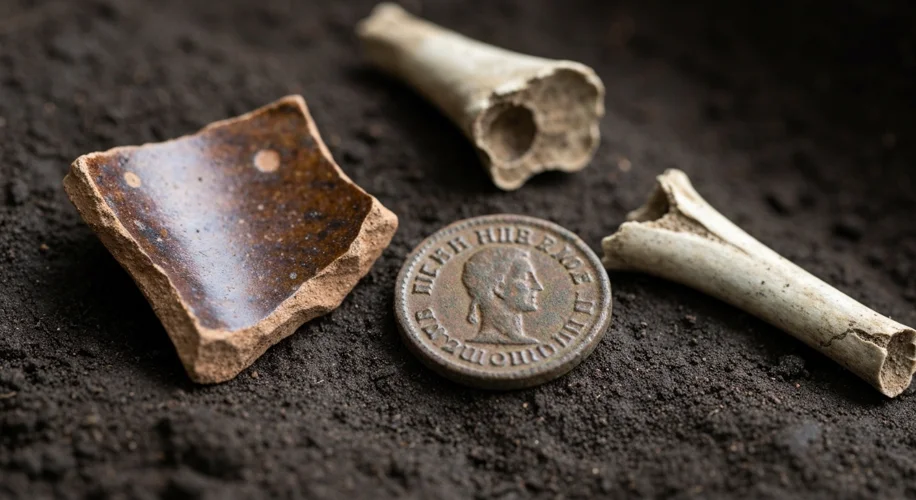Beneath the quiet fields of Pommerœul, Belgium, a silent story waited, buried for centuries. It speaks of lives lived, of rituals observed, and of the profound human desire to bridge the chasm between the living and the dead. Here, archaeologists have unearthed a remarkable Gallo-Roman cremation cemetery, a place where the earth itself holds the echoes of a forgotten era.
Imagine the scene: the crisp air of Roman Gaul, circa the 2nd century AD. Smoke curls from funeral pyres, carrying the essence of the departed towards the heavens. The community gathers, their faces a mixture of grief and solemn respect, for a ritual that was central to their existence. Cremation was not merely an end, but a transformative journey, a purification by fire before the soul rejoined its ancestors.

At Pommerœul, this ancient practice has left tangible traces. The cemetery is a tapestry woven from individual lives, each cremation pit a unique narrative. Within these pits, the ashes and bone fragments of the deceased were collected, often accompanied by grave goods – items believed to serve the departed in the afterlife. Pottery, coins, jewelry, and tools have all been found, offering intimate glimpses into the daily lives and social status of these ancient people.
However, one particular burial at Pommerœul presented an extraordinary puzzle, a testament to the fluidity of life and the enduring power of place. This single cremation pit contained not only the remains from its primary burial period but also evidence of earlier, and perhaps later, disturbances. This was not uncommon; ancient cemeteries were sometimes re-used or disturbed by later generations for various reasons, be it ritualistic, practical, or simply the passage of time.
But what made this specific burial so compelling was the presence of artifacts and cremated human remains that suggested a much longer history of use, potentially spanning centuries. Imagine the painstaking work of the archaeologists, carefully sifting through layers of earth, smoke-blackened soil, and fragmented bone. Each tiny shard of pottery, each corroded coin, each calcined fragment of bone is a whisper from the past.
This particular pit may have held the cremated remains of a Roman soldier in the 2nd century, buried with a coin to pay Charon for passage across the river Styx. But perhaps, centuries later, a later generation, cherishing the memory of this sacred ground, returned to bury one of their own in the same spot, their own earthly remains mingling with those who came before. Or, conversely, perhaps an earlier, less elaborate burial was disturbed by the Roman-era interment, its ancient ashes disturbed and incorporated into the new ritual.
This layered burial challenges our neat categorizations of time. It speaks to a continuous connection to this sacred space, a place where the living felt compelled to return, to add their own chapter to its long story. It forces us to consider how people interacted with the past in their present. Did they recognize the earlier burials? Did they revere them? Or were these earlier occupants simply forgotten, their presence an accidental, yet meaningful, addition to a new ritual?

The analysis of the cremated remains themselves can reveal much. Are they from a single individual, or multiple? What was the age and sex of the deceased? Are there signs of disease or trauma that might explain their final rites?
This Gallo-Roman cemetery at Pommerœul, particularly the intriguing multi-period burial, serves as a powerful reminder of the cyclical nature of life and death, and the enduring human impulse to connect with those who have gone before. It’s a story written not just in bone and ash, but in the very soil that preserves these fragments of existence. It encourages us to look at ancient sites not as static snapshots in time, but as dynamic landscapes where the past continually informed and intertwined with the present, creating a rich, complex, and deeply human narrative.
The careful excavation and interpretation of sites like Pommerœul allow us to piece together not just the ‘what’ and ‘when’ of history, but the ‘how’ and ‘why’ – offering a profound connection to the lives that shaped our world, one cremation at a time.

